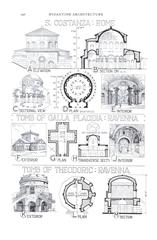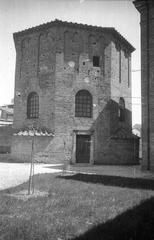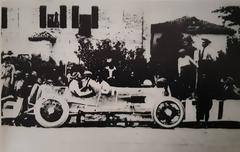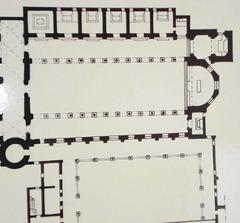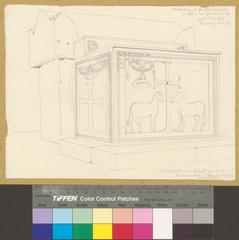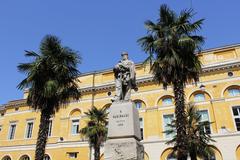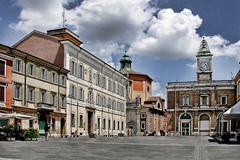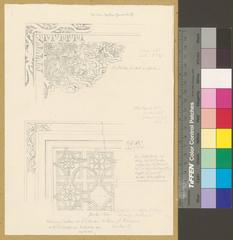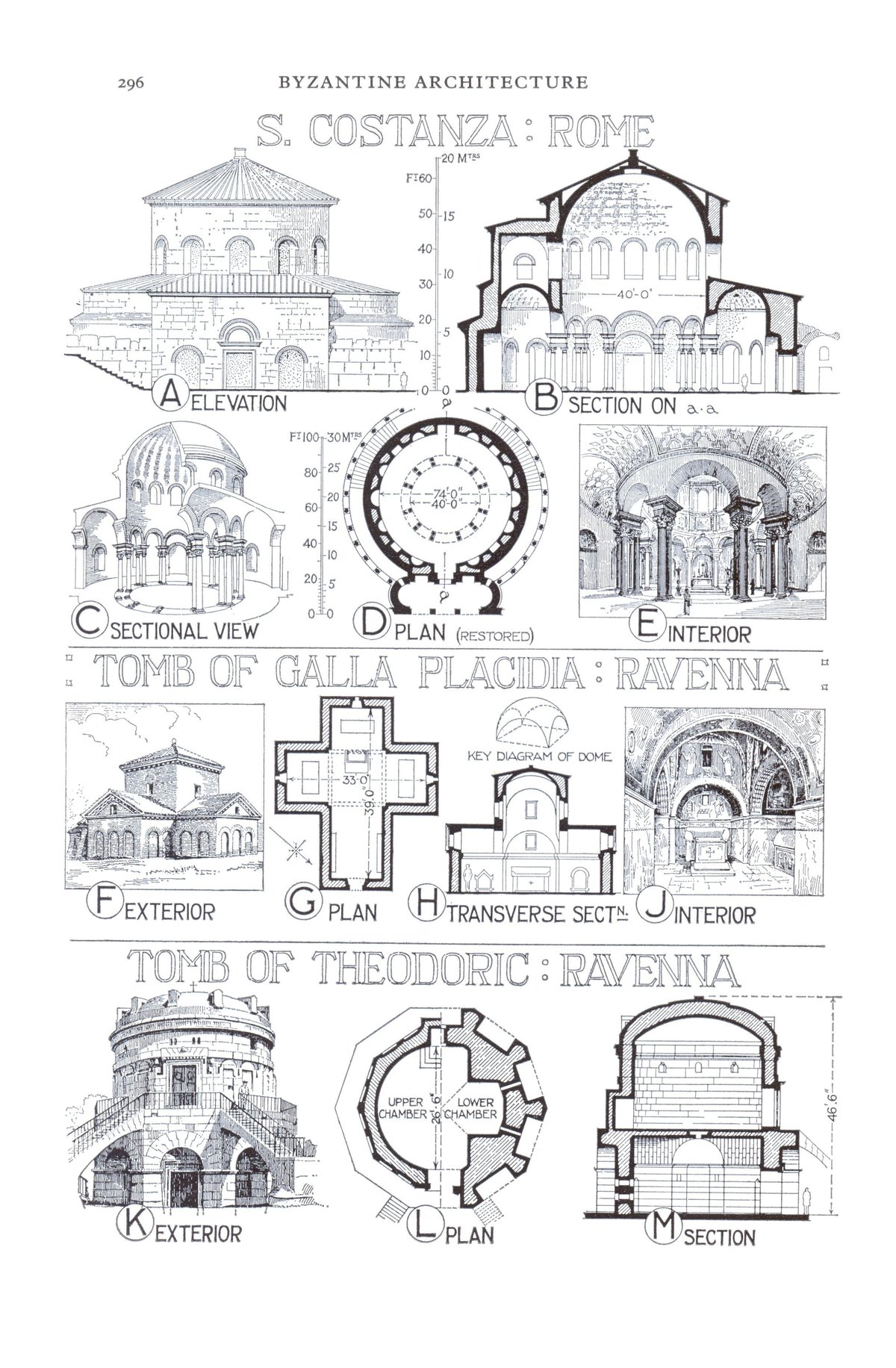
Mausoleum of Theodoric: Visiting Hours, Tickets, and Complete Ravenna Historical Sites Guide
Date: 14/06/2025
Introduction
The Mausoleum of Theodoric, located in Ravenna, Italy, is a singular architectural and historical marvel dating from the early 6th century. Constructed around 520 CE for Theodoric the Great, king of the Ostrogoths, this imposing tomb is celebrated for its massive monolithic dome—carved from a single piece of Istrian limestone—and as the only surviving burial site of a “barbarian” king from the era. It stands as a testament to the fusion of Gothic and Roman traditions and the cultural synthesis that defined Ravenna as a crossroads of civilizations in late antiquity.
Whether you are a history enthusiast, architecture lover, or a curious traveler, this guide provides comprehensive information for visiting the Mausoleum of Theodoric. Here you’ll find current visiting hours, ticketing details, accessibility advice, and practical travel tips. Additionally, you’ll discover the mausoleum’s architectural highlights, cultural significance, and suggestions for nearby UNESCO World Heritage sites in Ravenna to round out your visit. For the latest updates and official information, consult Ravennantica and the Ravenna Tourism Official Site.
Table of Contents
- Introduction
- Visiting Theodoric’s Mausoleum: Hours, Tickets & Accessibility
- Historical Background: Theodoric the Great
- Architectural Highlights
- Structural Layout and Engineering
- Preservation & Later History
- Practical Visitor Information
- Nearby Attractions
- FAQs
- Conclusion
- Sources
Visiting Theodoric’s Mausoleum: Hours, Tickets & Accessibility
Opening Hours
- Tuesday to Sunday: 9:00 AM – 7:00 PM
- Closed: Mondays, January 1, December 25
- Last Entry: 30 minutes before closing
Hours may vary seasonally. For up-to-date hours, always consult the official tourism website.
Ticket Prices
- Adult: €4.00–€5.00
- Reduced: €2.00–€3.00 (students, EU citizens aged 18–25)
- Free: Children under 18, EU citizens over 65, residents of Ravenna, disabled visitors with a carer, journalists, and certified guides
On the first Sunday of each month, entry is often free as part of a national initiative for state museums. Tickets are available on-site; combination tickets for other Ravenna sites are also available (Ravennantica; European Traveler).
Accessibility
The mausoleum is partially accessible. While the lower chamber can be reached with minimal barriers, the upper chamber is accessible only via steep stone stairs and is not suitable for wheelchairs. Contact the visitor center for detailed accessibility accommodations.
Visitor Tips
- Best Time to Visit: Early morning or late afternoon for fewer crowds and optimal photography.
- Photography: Permitted without flash or tripods.
- Facilities: There are no restrooms or cafés on site.
- Dress Code: Respectful attire is advised due to the site’s funerary nature.
- Guided Tours: Available in multiple languages and highly recommended for in-depth historical context.
Historical Background: Theodoric the Great
Theodoric the Great (454–526 CE) was a pivotal figure in post-Roman Europe. A native of Pannonia, educated in Constantinople, he became king of the Ostrogoths and seized control of Italy, establishing Ravenna as his capital in 493 CE. His reign marked an era of relative peace and cultural integration, blending Gothic, Roman, and Eastern influences (student-notes.net). Theodoric’s policies emphasized coexistence and the preservation of Roman traditions, as symbolized by his imposing mausoleum.
Architectural Highlights
Monolithic Dome
The mausoleum is crowned by a single slab of Istrian limestone—a dome measuring about 10.73–11 meters in diameter and weighing between 230 and 300 tons. This is the largest monolithic dome known in antiquity, and its transport and installation remain a feat of ancient engineering (Britannica; Ravennantica).
Twelve stone handles on the dome, later inscribed with the names of apostles and evangelists, add symbolic Christian significance and may have aided in positioning the dome (nomads-travel-guide.com).
Roman and Gothic Fusion
The mausoleum’s design reflects a blend of Roman and Germanic traditions. Its two-story, decagonal plan is unique; the lower chamber follows a Greek-cross layout, while the upper chamber (originally housing Theodoric’s sarcophagus) is circular. The use of massive stone blocks instead of brick further differentiates it from Ravenna’s Byzantine monuments (European Traveler).
Interior Features
The austere interior, devoid of mosaic decoration, focuses attention on the monumental stonework and geometric purity. The upper chamber contains a porphyry tub (labrum) long associated with Theodoric’s burial, though his remains were removed centuries ago.
Structural Layout and Engineering
- Two-Tiered Design: Both levels are decagonal in plan. The lower level, likely used for funerary liturgies, is cross-shaped inside. The upper chamber, accessible by an external staircase, was the king’s burial chamber.
- Materials: Constructed entirely from blocks of Aurisina and Istrian limestone, quarried over 400 km away, demonstrating advanced logistical and engineering skills (Ready Set Italy).
- Construction Techniques: Dry-laid stonework—uncommon in late Roman architecture—was used, possibly drawing on the expertise of Syrian stonemasons (Ravennantica).
Preservation & Later History
After Theodoric’s death, the mausoleum was consecrated as a Christian oratory following the Byzantine conquest in 561 CE, with his remains removed and lost (nomads-travel-guide.com). The structure underwent some modifications, including the addition of a cross and the apostolic inscriptions. Over time, the mausoleum was partially submerged by silting and restored in the 19th century.
It was inscribed as a UNESCO World Heritage Site in 1996 for its outstanding universal value and as the only surviving tomb of a “barbarian” king from the late Roman period (traveldoneclever.com).
Practical Visitor Information
Location & Getting There
The mausoleum is located in a public park northeast of Ravenna’s city center (about 1.5 km from the train station).
- By Foot/Bicycle: Walkable from the center; safe cycling routes available.
- By Bus: Lines 2 and 5 stop nearby (Ravenna City Guide).
- By Car: Free parking is available.
- By Train: Direct trains from Bologna; taxis available from the station.
Facilities
- No restrooms or cafés at the mausoleum; amenities are available in the city center.
- Interpretive panels in Italian and English provide historical context.
Nearby Attractions
Ravenna’s compact city center allows easy access to multiple UNESCO World Heritage sites, including:
- Basilica di San Vitale
- Mausoleum of Galla Placidia
- Basilica of Sant’Apollinare Nuovo
- Arian and Neonian Baptisteries
- Dante’s Tomb
Combining these sites with the Mausoleum of Theodoric forms a comprehensive itinerary for a full day’s exploration (City Planet).
Frequently Asked Questions (FAQ)
Q: What are the Mausoleum of Theodoric’s opening hours?
A: Typically, 9:00 AM–7:00 PM, Tuesday to Sunday; closed Mondays and major holidays. Confirm current hours before your visit.
Q: How much are tickets?
A: €4–€5 for adults; reduced and free options available.
Q: Is the mausoleum accessible for wheelchairs?
A: The lower chamber is partially accessible; the upper chamber is only accessible by stairs.
Q: Are guided tours available?
A: Yes, in multiple languages, and highly recommended.
Q: Is photography allowed?
A: Yes—no flash or tripods.
Q: Are there free entry days?
A: The first Sunday of each month is often free as part of a national initiative.
Conclusion
The Mausoleum of Theodoric is an essential destination for anyone interested in the intersection of Roman, Gothic, and early medieval history. Its monumental stonework, unique architectural features, and palpable sense of history make it a standout among Ravenna’s UNESCO sites. By following the practical tips and historical insights provided here, you can enjoy a seamless, educational, and inspiring visit.
For the latest details, guided tour bookings, and further travel inspiration, consult the official Ravennantica website, download the Audiala app, and explore related articles on Ravenna’s cultural treasures.
Sources
- Ravennantica
- Ravenna Tourism Official Site
- European Traveler
- Britannica
- Ready Set Italy
- student-notes.net
- nomads-travel-guide.com
- traveldoneclever.com
- Ravenna City Guide
- Arrival Shall
- Ancient Origins
- Wanderlog
- City Planet
